Consider a situation wherein your car indicators are placed near the glove compartment, the horn near the back seat, ignition turn on/off button near the fuel tank, and steering wheel with the button to open the side doors. How infeasible it would be!
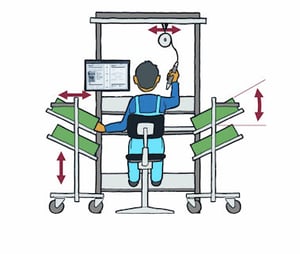
Of course, nobody will ever want to drive such a non-ergonomic car that can cause a threat to human life.
Likewise, for content marketers and publishers who create and publish content, their editorial experience must be seamless. It implies that they should be able to publish quality content in less time ahead of their competitors.
This blog is an attempt to interconnect the long-proven Japanese concepts of manufacturing - Kaizen and 5S’ technique with the editorial experience in the digital world to help companies implement it through Drupal and make their teams more productive for content creation and publishing.
Applying Manufacturing Concepts to Editorial Workflows in Publishing
Whether you have realized or not, you do have an editorial workflow. It is simply the way your content gets published.
However, if you have never given it much thought or attention, your team’s workflow is likely undefined, unclear, and unhelpful. It probably changes from article to article, and steps are missed or completed out of order.
See how manufacturing concepts can be applied to improve editorial workflow -
Getting into Editors’ Shoes
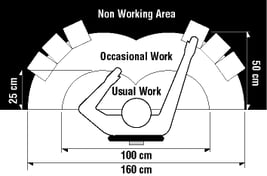
Advancement in technology can facilitate editors to produce good quality content and with high quantity. Though leveraging it the right way can only ensure the productivity and quality of the work.
For an engineer on a manufacturing assembly line, carefully studying each step from pulling an electric screwdriver hanging from the ceiling and 5 screws from a bucket kept right near the waist level to eventually gripping those screws in the car.
Likewise, for editorial teams, it’s important to understand tasks that are repeated by the majority of the users and categorize them in high, medium, and low-frequency High Time tasks.
Understanding Key Pain Areas
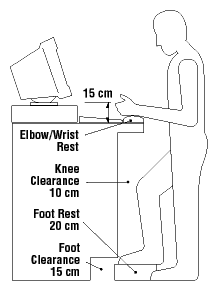
Editors and publishers when working in collaboration should be able to maximize efficiency and revenue for the business. Stakeholders should emphasize the use of a specific mindset and tools to create efficiency and value. Here are some pain points that enterprises must resolve to help address those challenges-
American Society of Quality teaches a concept of FMEA (Failure Mode Effect Analysis) which can be directly applied to Editorial experience betterment
"Failure modes" means the ways, or modes, in which something might cause delays or complicate the workflow
"Effects analysis" refers to studying the consequences/results of those.
Focus on the tasks that hold the highest chances of occurrence and their consequences on the editorial experience and on business outcomes
Examples of Failure Modes and Effects
|
Failure Mode |
Effects |
|
Long Content Forms |
Time Delays, Frustration for teams |
|
Excessive clicks to complete a form |
Time Delays for publishing, complicated workflow |
|
Multiple Screen Navigations |
Possible loss of information, time delays |
|
One body field for all content |
Difficult to manage changes, Low-richness of content |
Applying Lean Manufacturing 5S’ technique for better Editorial Experience
The term 5S is taken from five Japanese words -
- Seiri
- Seiton
- Seiso
- Seiketsu
- Shitsuke
When translated in English, these words become-
- Sort
- Set in Order
- Shine
- Standardize
- Sustain
Here, each “S” represents one part of the five-step process that can improve the overall functioning of a business. Let’s get in detail of each “S”.
1. Sort: This involves going through all the tools(buttons), furniture(fields), equipment(process), etc. in a work area(content management system) to find what needs to be present and what can be removed.
- When was this item(field) last used?
- What is the purpose of this item(field)?
- How frequently is it used?
- Who uses it?
- Does it need to be here?
Logical Grouping of Fields: When was the last time you cribbed about the monologue like marketing forms or a job application which took you years to complete?
 Long and Verbose Content Forms vs Logical Grouped Forms with Form tips
Long and Verbose Content Forms vs Logical Grouped Forms with Form tips
Now think wearing editors’ hat who have to create content using those long forms 10, 20, 50, 100 times a day, these just prove as a hindrance for editors to create and innovate with their content
Logical Grouping of fields via the Field Group module makes the form short and easy for editors to only pick and add information in the fields which are concerned to them.
Form Tip is another intuitive feature to avoid long-form(black box in the screenshot on right) and give editors some info about the info that needs to be added in the field.
2. Set in Order
Once the clutter is gone, it's easier to see what's what. Now workgroups can come up with their strategies for sorting through the remaining items.
- Collapsible Fields is another way to reduce the length of the form and collapse the fields which are not used widely in all content

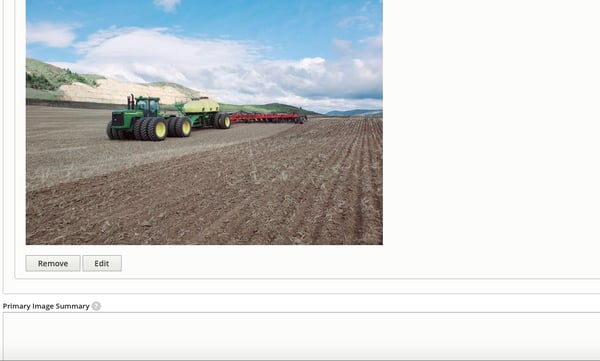
- Conditional Fields is another way to reduce the number of fields on the form, show/hide fields based on condition, eg. the ‘Primary Image Summary’ field for an image will appear only if there is an image uploaded to an article (As seen for ‘Primary Image’ field in Screenshot)
- Number of Clicks - Carefully minimize the number of clicks to achieve a task
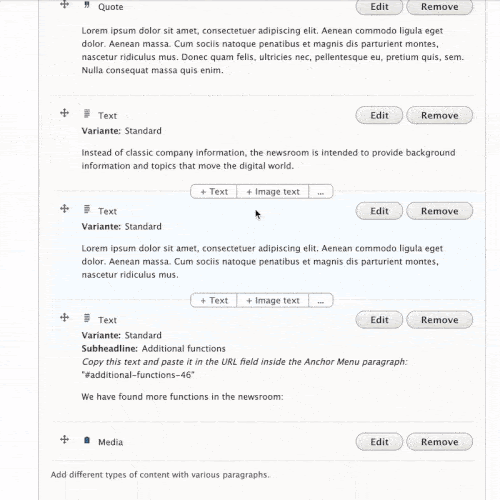
Rich Multimedia Features- Helps creating a modular content structure with different logical fragments of content rather than just one large body field. Use this to add rich social media features like Embeds, Slideshows, Videos, Audio Podcasts.

- Taxonomy Manager allows editors to manage all the master content and vocabularies in the system in an intuitive interface
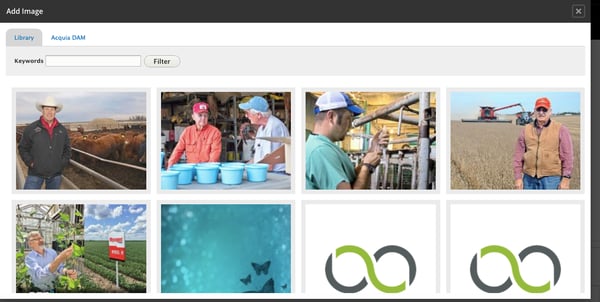
Helps listing the items together for a section of the website
3. Shine:
The Shine stage of 5S focuses on styling and theming of the interface for the creation and publishing of content for editors.
- Giving editors much larger space to write and manage content contrary to the traditional content forms
- Max Length Helps defining field limits to make sure the user doesn’t exceed the limits
- Colors and Font: Use clear visible font-size which are not stressful to the eye. Use solid colors for the header/footer menu of content entry screens for better visibility of text.
 Header/footer menu of content entry screens for better visibility of text
Header/footer menu of content entry screens for better visibility of text
4. Standardize: Use standardized field types to supplement faster creation of content.
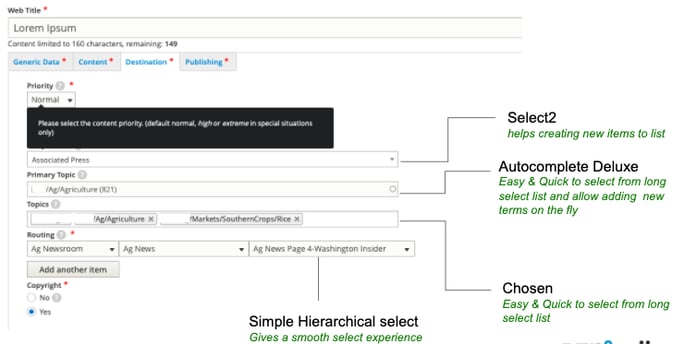
Some industry-standard field types that can be used are mentioned below:
- A long list of options: Eg. the country field can be configured using Auto-complete deluxe
- Multiple values in a field: Eg. Keywords field can be configured using Chosen fields; it’s quick and gives a fast response if the user wants to remove an item
- Hierarchical items can be configured using SHS
There are a few more industry-standard features that should be added to the interface for standardizing editorial experience:
Auto-Save of ProgressIf the user's browser or machine dies while editing an article; the edits will be presented to the user the next time they return to the article
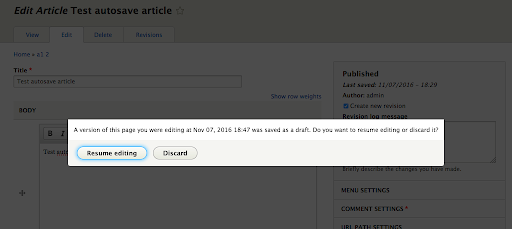
When a user is editing an article, any other user that attempts to edit the same article will be blocked from doing so and notified that the content is already being edited. 
5. Sustain: This is the last of the 5S’. It is not only about keeping the 5S running smoothly, but also about keeping everyone in the organization involved.
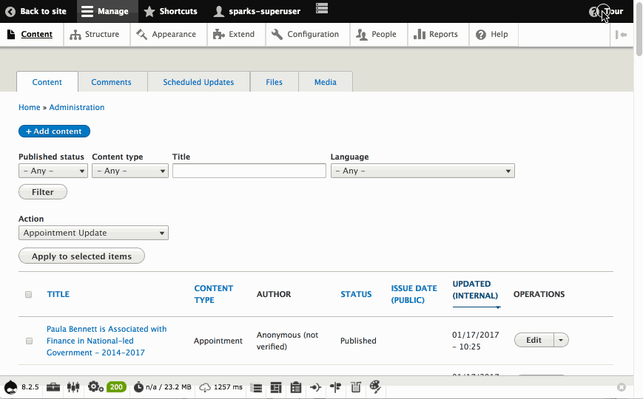 Training and Onboarding: Quick Editorial onboarding for the editors which means the teams can self-learn on creating content and publishing content without specialized training.
Training and Onboarding: Quick Editorial onboarding for the editors which means the teams can self-learn on creating content and publishing content without specialized training.
Saves a lot of time and money to onboard a new publishing interface.
Summing up-
Though 5S is quite a simple concept, beginning a new program of it can feel daunting.
You can start by rolling out a plan with practical steps such as deciding the departments and individuals to be involved, what training will be needed, and what tools will be helpful in executing the process.
Determining these concrete steps would help you successfully carry out the process of 5S implementation. Besides, Drupal has the potential to enhance the editorial workflow significantly through its powerful modules and distributions.
Our Services
Customer Experience Management
- Content Management
- Marketing Automation
- Mobile Application Development
- Drupal Support and Maintanence
Enterprise Modernization, Platforms & Cloud
- Modernization Strategy
- API Management & Developer Portals
- Hybrid Cloud & Cloud Native Platforms
- Site Reliability Engineering





